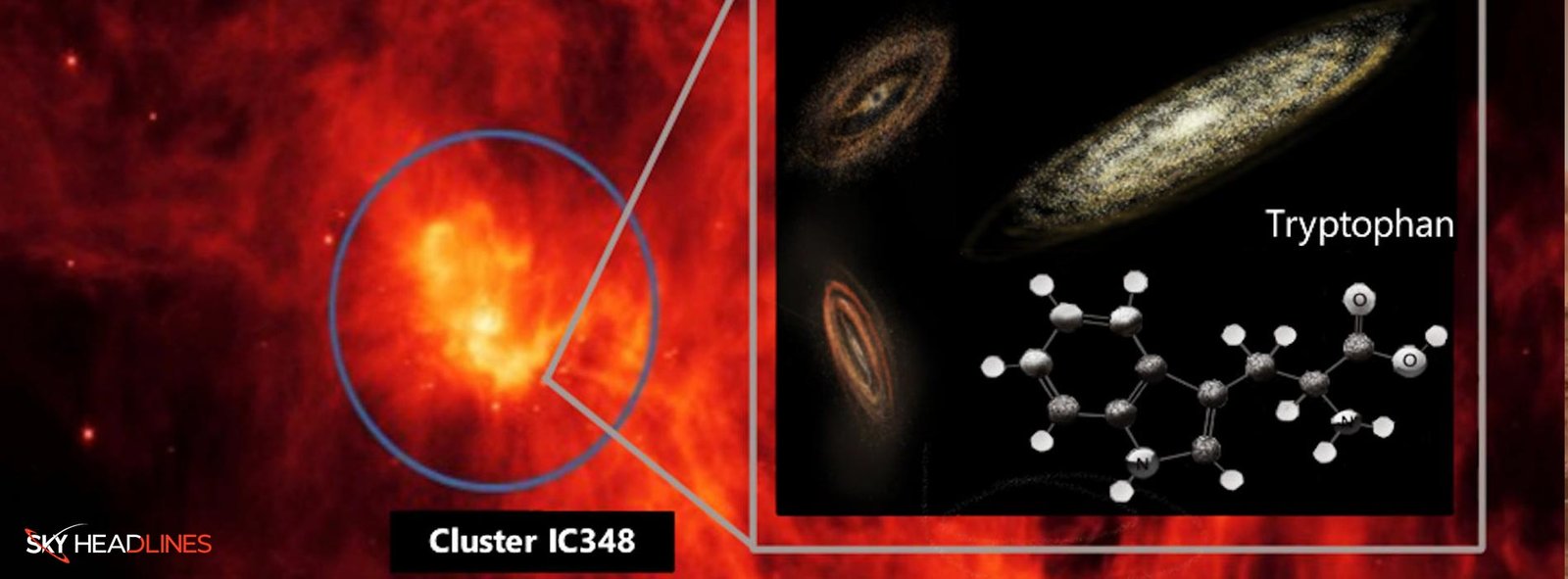News:
Amino Acids in Nebulae, Comet Tails, and Star Nurseries
During the close pass of Halley’s Comet in 1910, scientists detected a molecule called Cyanogen in the comet’s tail. Cyanogen, also known as toxic cyanide, caused some concern among people. In the 1940s and 1950s, radio scientists discovered more simple compounds in space. However, it wasn’t until 1969 that they found a complex molecule called formaldehyde, which is a type of simple carbohydrate essential for life on Earth. This discovery sparked speculation about the presence of organic compounds in space.
Amino Acids in Space, the Essential Precursors
Studies have revealed the existence of numerous complex molecules, such as amino acids, in meteorites. Amino acids play a crucial role in life as they contribute to protein synthesis and are integral components of DNA and RNA. However, detecting amino acids in space is challenging. As a molecule becomes more complex and displays more lines in its spectrum, distinguishing it from other molecules becomes increasingly difficult.
Meteorites are fragments of asteroids or comets that have landed on Earth. Scientists suggest that the chemical similarities found in meteorites indicate the presence of amino acids, which were potentially formed in deep space before the formation of the solar system.
Glycine, First Amino Acid in Space
Nonetheless, advances in high-resolution spectroscopy have improved our ability to identify complex molecules in space. In 2003 scientists detected the first amino acid, glycine, in a nebula. Glycine is the simplest stable amino acid and also acts as a neurotransmitter in the human brain. Subsequently, glycine was found in comet tails and star nurseries, suggesting that amino acids necessary for life might have originated in space.
Tryptophan, New Amino Acid in PMC
In a recent discovery, scientists found another amino acid, tryptophan, in space. Tryptophan is a type of amino acid responsible for protein synthesis. In turn, it is the key factor in ensuring the development or existence of living organisms. The researchers detected tryptophan within the Perseus Molecular Complex (PMC), which consists of star-forming clouds. The location of these clouds was around 1,000 light years away from Earth. By analyzing data obtained from the Spitzer infrared observatory, the scientists could identify 20 spectral lines specific to tryptophan. The team made this significant finding in a relatively warm region of the star-forming area. This indicated a higher chance of the occurrence of certain additional amino acids in warm space clouds.
Which Compounds exist on Mars?
Expeditions and studies have been carried out to look for organic substances, like amino acids, on the surface of the planet. In archaic Martian rocks, Curiosity found complicated organic molecules in 2018 such as thiophene, methanethiol, and dimethyl sulfide.
Are there any traces of Amino acids on the Moon?
A group of NASA-funded researchers has resolved a continuing enigma from the Apollo moon landings, regarding the source of organic stuff discovered in lunar remains that were brought back to Earth. Low quantities of organic matter in the form of amino acids are present in the samples of soil brought back from the Moon by Apollo astronauts. The fundamental components of proteins, which are necessary for existence and are employed to create structures like the skin and hair and control chemical processes, include several amino acids.





